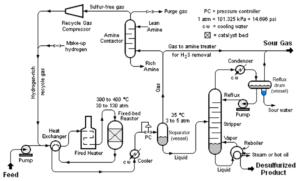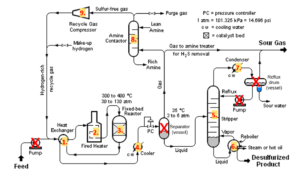48 Cost of Operating Labour
Learning Objectives
By the end of this section, you should be able to:
Understand the components of manufacturing costs
Estimate the cost of operating labour
Manufacturing Costs
Typically divided into three main elements:
- Direct manufacturing costs: Factors that vary directly with the rate of production
e.g. raw materials, plant operators - Fixed manufacturing costs: Factors not affected by the level of production, but related to manufacturing
e.g. taxes and insurance - General expenses: Management and administrative expenses not related to manufacturing
Useful Entities for Estimating Costs
- Fixed capital investment (
- Cost of raw materials (
- Cost of utilities (
- Cost of operating Labor (
- Cost of waste treatment (
Number of Operating Labour
The number of operators (
where
– number of operating labour workers at a given time
– process steps involving handling solids (transport, partical size control, particulate removal)
– number of process steps not invloving handling solids, including compression, heating, cooling, mixing, separation and reaction, but not including pumps and vessels
We will take the convention of rounding up to the nearest integer to ensure there is enough labour to operate the plant, although in practice there may be ways to have part-time staff etc.
Cost of Operating Labour
The number of operators is rounded up to the nearest integer when the calculation does not result in a whole number.
The number of total shifts in a year and the number of shifts per operator can be calculated as follows:
On average an operator works five eight-hour shifts per week for 49 weeks per year (3 weeks off for sick leave and vacation deducted from 52 total weeks in a year).
A plant generally requires operators 365 days a year including maintenance and shutdowns. One day is split into 3 eight-hour shifts.
The number of operators needed to fill a position that needs one operator at a given time is
To find the total cost of operating labour, we can use an average salary for a plant operator. The average salary for a plant operator can be found from an agency such as Statistics Canada.
Suppose each shift requires 4 operators on the site (
The number should be rounded up if it does not result in a whole number.
Say an operator receives a salary of 70,000 dollars per year, the total cost of operating labour is
Exercise: Calculating the Cost of Operating Labour
A typical catalytic hydrodesulfurization process used in oil refineries to convert organic sulfur compounds in various process streams into hydrogen sulfide gas is shown below. All streams in the process only involve liquid and gaseous phases.

Image obtained from mbeychok via Wikimedia commons / CC BY-SA 3.0
Given the information:
- On average, a worker in this plant works 5 shifts a week, 49 weeks a year
- The plant operates 365 days a year with 3 shifts per day
- The average salary for an operator in this plant is 80,000 dollars per year
Calculate the total cost of operating labour per year.
Solution
Step 1: Calculate the number of operating labour (
From the labels, the process does not involve handling solids(

So
Therefore, each shift needs 3 operators.
Step 2: Calculate the number of operators needed to fill a position that needs one operator at a time:
Step 3: Calculate the total number of operators needs to be hired for the plant:
Step 4: Calculate the total cost of operating labours:
References
[1] Alkhayat, W. A., and A. M. Gerrard, Estimating Manning Levels for Process Plants, AACE Transactions, I.2.1–I.2.4, 1984.


Feedback/Errata